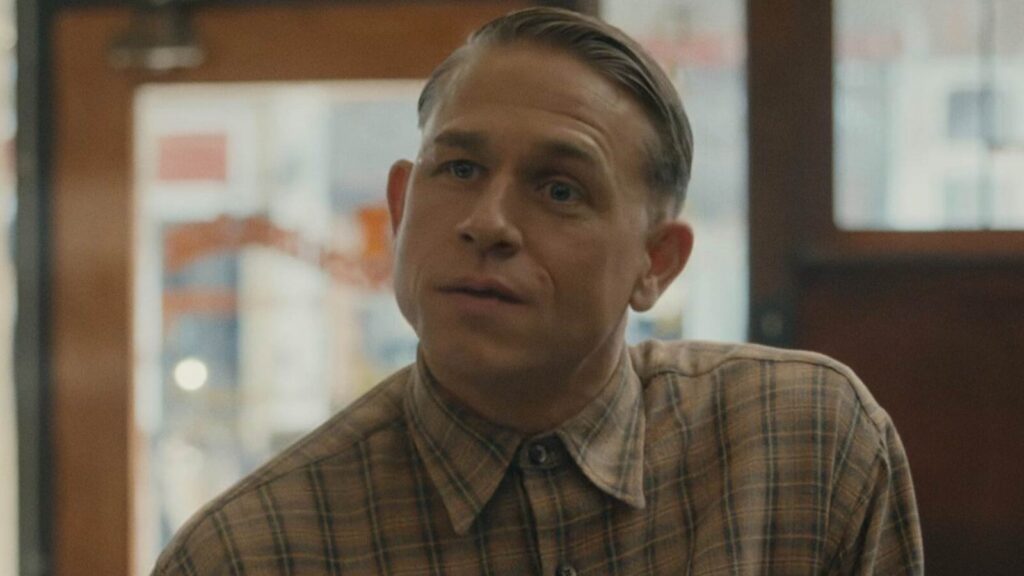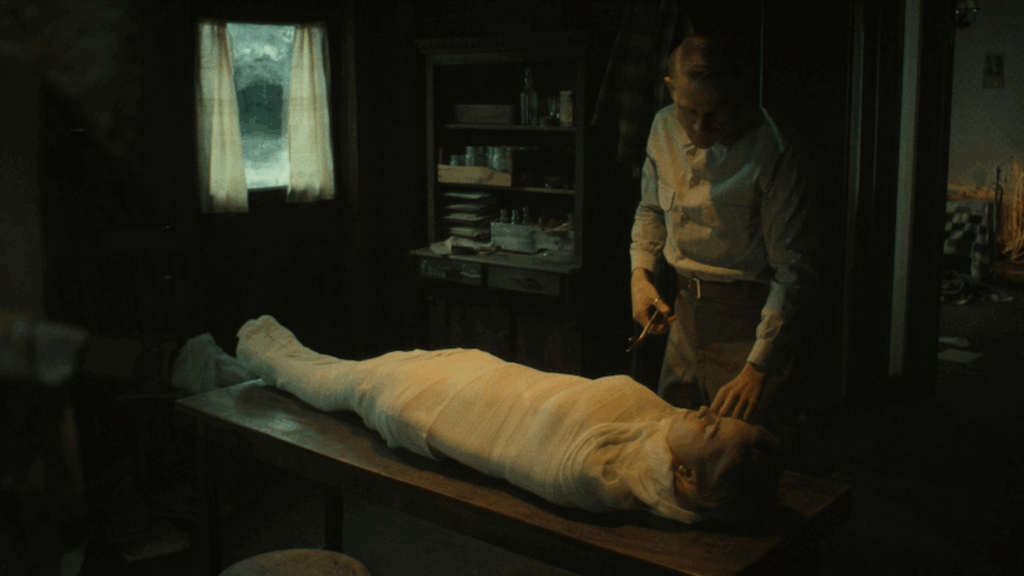Monster: The Ed Gein Story finale doesn’t just wrap up Gein’s life, but it also slips in a cinematic wink to Mindhunter, connecting its portrayal of the killer to the foundation of FBI profiling.
As the co-creator Ian Brennan explained to Tudum, the location cards and appearance of FBI agents are meant to be a homage to Joe Penhall and David Fincher series.
We wanted to underline the last thing tonally that through Silence of the Lambs, he really influenced Mindhunter as well. That would be a fun way to put a cap on it, to use this other filmic vocabulary and then talk about the ways that he was part of those early days of FBI profiling.
But before that meta tie-in comes, the series dramatizes how Gein is caught. It does not shy away from portraying his deeply troubling psychological traits, including his gynephilic obsessions.
How Is Charlie Hunnam’s Ed Gein Arrested in Monster: The Ed Gein Story?





In the Netflix version, Gein’s capture builds from a slow unraveling rather than a dramatic showdown. The turning point occurs when police discover Bernice Worden’s murder, inspect her hardware store, and trace clues that lead them back to the Gein farm.
In the show, the Worden disappearance unravels a trail of clues and grisly evidence, from body parts, trophies, to bizarre items made from human remains, that implicate Charlie Hunnam’s Gein. Local deputies turn the Gein property into a crime scene, and witnesses help seal the case.
Historically, Gein was arrested on November 16, 1957, after authorities discovered Worden’s body and traced blood in her hardware store to his farm (via Entertainment Weekly).
The show amplifies and dramatizes some of the investigative steps (e.g., showing more forensic efforts and dramatized confrontations) to heighten tension and narrative clarity. In short, the series combines factual anchors with dramatized tension to make it feel more cinematic.
Monster: The Ed Gein Story Felt It Was Important to Depict Gein’s Gynephilic Tendencies

One of the more controversial choices in Monster is how openly it portrays Gein’s obsessive attraction to women, not just as victims, but as objects (body parts, remains, the so-called “woman suit”) and ideals.
In the series, we see Charlie Hunnam’s Ed Gein communicating with Ilse Koch, the German war criminal who reportedly inspired him, and with Christine Jorgensen, the first person to undergo s*x reassignment surgery in the United States. While Gein seems convinced that he too is a transgender, Jorgensen corrects him that he is a gynephilic, a man who’s so aroused by the female body that he wants to be inside it (via Tudum).
The creators felt it was important to make this distinction, as Brennan remarked to Tudum.
It was really important for us to make that distinction, for us to say, ‘Look, these are two very different things.’ And it was cool to be able to put it in the mouth of Christine Jorgensen. For him to be told that through her in his mind was a really cool moment.
The show’s main question, “Are monsters born or are they made?” leans into the idea that his s*xual obsessions were molded by trauma and mythic imagery, not just violent impulses.
While critics seem to have flagged this depiction as sensationalization, these details nonetheless help understand why Gein became an icon in the horror imagination. What do you think about this reasoning and excessive dramatization? Was it worth it, or did the series overreach with its creativity and undermine its credibility?
Monster: The Ed Gein Story is now available for streaming on Netflix.





